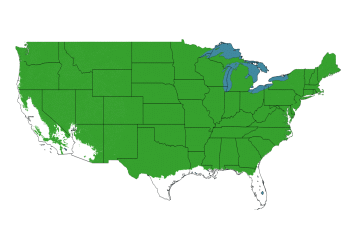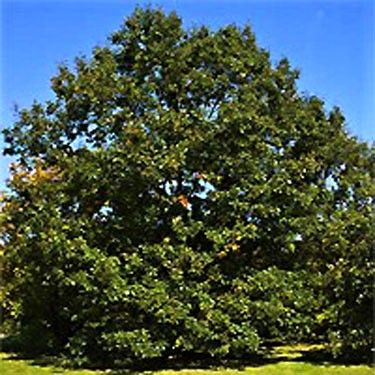✖
An Oak By Many Names
The Black Oak tree, Quercus velutina, is very similar in appearance to the Red Oak. One of the main differences include its ability to thrive on poor and varied soils!
It is sometimes called Yellow oak, Quercitron, Yellowbark Oak, or Smoothbark oak. Black Oak trees occur naturally on poor sandy or clay hillsides.
This deciduous tree has deeply furrowed bark and on mature trees is nearly black. The thick, nearly-black bark is marked with deep furrows and irregularly broken ridges. The characteristic inner bark is bright yellow to orange, hence the alternate common name of Yellow Oak.
This moderately growing Oak tree grows on dry uplands, slopes and ridges. The wood, while hard and strong, is not tough. It generally is inferior to that of the Red Oak. Still, it is used in much the same way. Historically, the inner bark was important for its tannin and as a source of yellow dye.
The green leaves have a notably velvety underside. Black Oak produces a good crop of acorns that provides wildlife with food. Black Oak is not extensively planted as an ornamental, but its fall color contributes greatly to the aesthetic value of Oak forests.
Having significant wildlife value, Black Oak is an important tree to add to your Oak tree collection!
- Furrowed Bark
- Food For Wildlife
- Resilient And Tough
- Tolerates Poor Soil
| Botanical Name | Quercus velutina |
|---|---|
| Mature Height | 60 - 80 feet |
| Mature Spread | 40 - 50 feet |
| Soil Type | Sandy, Clay, Loam |
| Sun Exposure | Full Sun |
| Growth Rate | Moderate |
| Bloom Period | Early Spring |
| Flower Color | Insignificant |
| Fall Color | Yellow |
| Pollinator Required | No |
| Pollinator Friendly | Yes |
| Growing Zone Range | 3-8 |

Write Your Own Review

